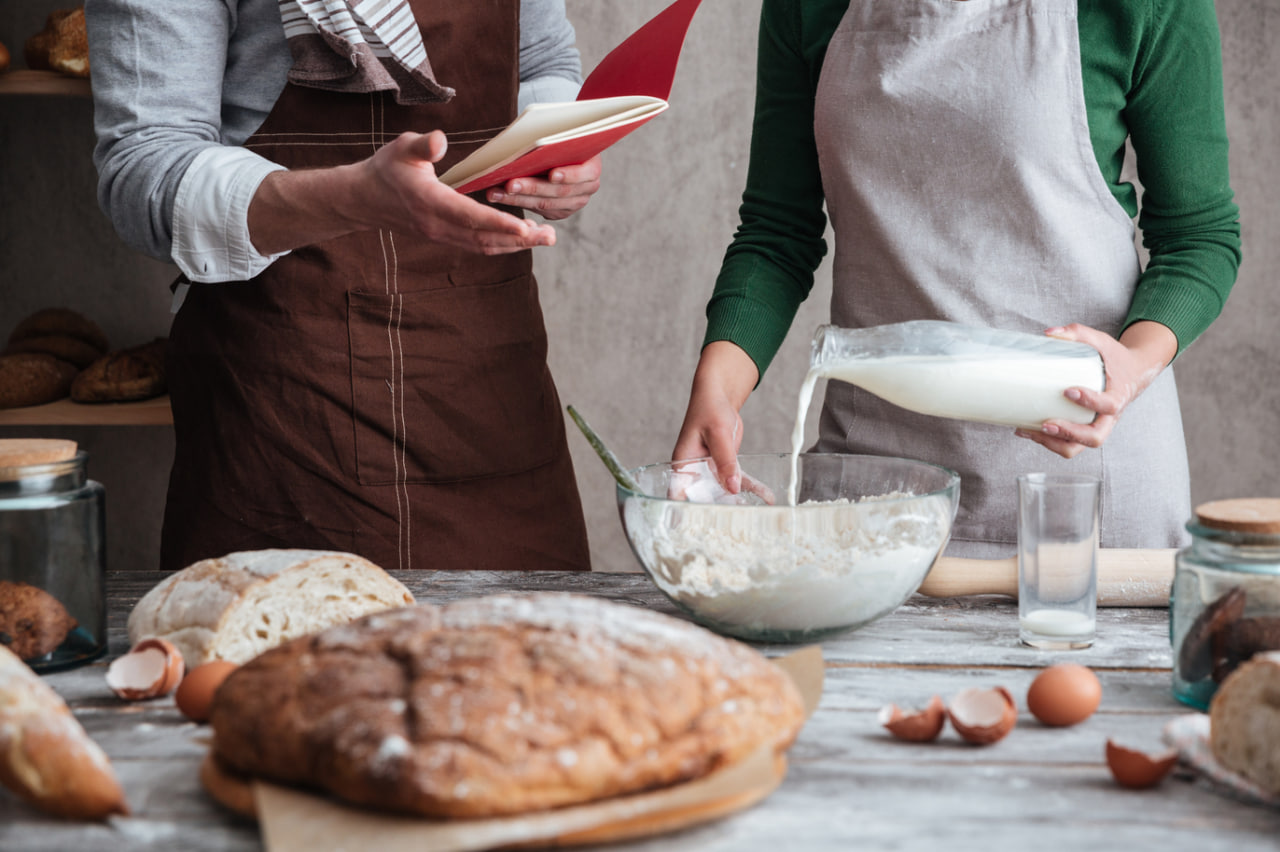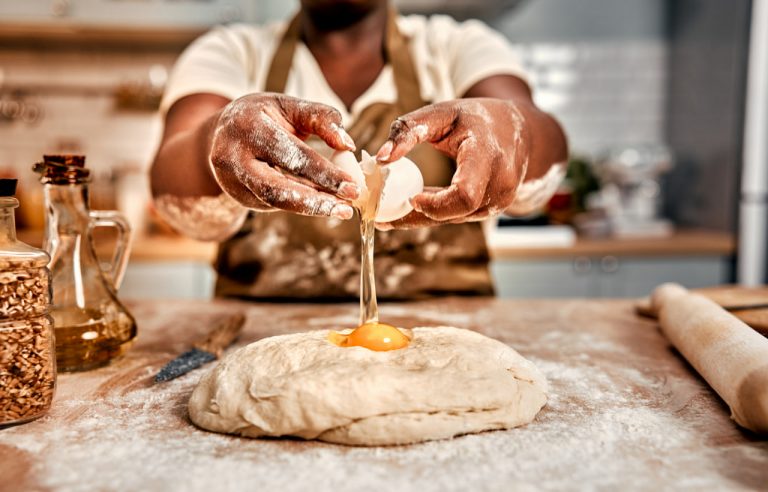Fermentation is often regarded as the secret to making delicious, high-quality artisan bread. Whether it’s the tangy flavor of sourdough or the light, airy texture of a perfectly proofed baguette, the fermentation process plays a vital role in transforming simple ingredients into a work of culinary art. Yet, despite its importance, many home bakers are still unsure about what fermentation truly entails and why it’s so crucial for creating great bread.
In this blog, we’ll dive deep into the science behind fermentation in breadmaking and explain why it’s indispensable for producing artisan loaves. By understanding the role of fermentation, you’ll be able to control the process better, improve your breadmaking skills, and elevate your baking to a whole new level.
What Is Fermentation in Breadmaking?
At its most basic, fermentation is a biological process in which microorganisms—mainly yeast and bacteria—convert sugars into alcohol and carbon dioxide gas. In breadmaking, yeast is the primary microorganism responsible for fermentation, while lactic acid bacteria (in the case of sourdough) contribute to the flavor and texture of the bread.
When you mix flour, water, and yeast together, a series of chemical reactions take place. The yeast begins to consume the sugars present in the flour, producing carbon dioxide, which causes the dough to rise. This process is called leavening, and it’s what gives bread its light, airy texture. Alongside yeast, the bacteria present in the dough work to create the distinctive flavors that make artisan breads so unique.
Why Fermentation Is Crucial for Artisan Bread
Fermentation isn’t just about making bread rise. The magic happens during the fermentation process, where flavors develop, textures improve, and the dough gains its unique character. Here’s a breakdown of the key reasons fermentation is so important for artisan bread:
1. Flavor Development
The extended fermentation process in artisan breadmaking allows for the development of complex flavors. Wild yeast and bacteria break down the starches and sugars in the dough, producing a range of organic acids, alcohols, and other compounds. These compounds give artisan bread its rich, tangy, and sometimes slightly sour flavor profile.
- Wild Yeast: The wild yeast present in sourdough and naturally leavened bread feeds on the sugars in the dough and produces alcohol and carbon dioxide, which contributes to the bread’s flavor.
- Lactic Acid Bacteria (LAB): In sourdough, for example, lactic acid bacteria play a crucial role in enhancing the flavor by producing lactic and acetic acids. These acids give sourdough its characteristic tanginess and depth of flavor, which would be absent in commercial yeasted bread.
The longer the fermentation time, the more time the yeast and bacteria have to break down the complex starches and sugars, which results in a more flavorful bread. Some artisan breads, like sourdough, benefit from a longer fermentation process (12-24 hours), allowing for more complex flavors to develop.
2. Improved Texture and Crumb Structure
Fermentation also plays a critical role in developing the texture of the bread. As yeast ferments the sugars in the dough, it produces carbon dioxide, which gets trapped in the gluten network, causing the dough to rise. This process is crucial for creating the open, airy crumb that is characteristic of artisan bread.
- Gluten Development: The proteins in flour, mainly glutenin and gliadin, form gluten when mixed with water. During fermentation, the gluten network strengthens, which helps retain the carbon dioxide produced by the yeast. This creates the desired airy pockets in the crumb.
- Crumb Structure: The extended fermentation time (especially with slower, cooler fermentation) allows for a better-structured crumb. Longer fermentation also gives the dough a chance to relax, making it easier to shape without it shrinking back.
Without proper fermentation, the gluten network wouldn’t be strong enough to hold the carbon dioxide bubbles, leading to a dense, heavy loaf.
3. Better Digestibility and Nutritional Value
The fermentation process also improves the digestibility of bread. The breakdown of starches and sugars during fermentation makes the bread easier to digest for many people, especially those with sensitivities to commercial yeast and gluten.
- Phytate Breakdown: Fermentation reduces the amount of phytates present in the dough. Phytates are compounds found in grains that can bind to minerals, making them harder to absorb by the body. Through fermentation, these phytates are broken down, improving the nutritional value of the bread and making minerals like iron, magnesium, and zinc more bioavailable.
- Lactic Acid Bacteria (LAB): LAB are known for their probiotic qualities, which can aid digestion. While the amount of probiotics in bread may be minimal compared to fermented foods like yogurt or kimchi, the presence of LAB in long-fermented breads like sourdough may offer some gut-health benefits.
4. Natural Preservation
Fermentation also plays a role in the natural preservation of bread. The acids produced during fermentation—specifically lactic and acetic acids—lower the pH of the dough, creating an environment that inhibits the growth of harmful bacteria and molds. This allows artisan bread to last longer without the need for artificial preservatives.
This is particularly true for sourdough, where the combination of wild yeast and bacteria creates a natural form of preservation. The acidity helps to prevent spoilage, allowing sourdough bread to stay fresh longer compared to many commercial breads, which often require preservatives.
The Different Stages of Fermentation
Fermentation occurs in several stages, each of which plays a different role in the development of the dough. Understanding these stages is key to mastering the breadmaking process.
1. Initial Mixing and Autolyse
The first step in fermentation is mixing the flour and water. The flour absorbs the water, and the gluten proteins begin to form. Some bakers choose to incorporate an “autolyse” period at this stage, where the dough rests for 20-30 minutes after mixing, allowing the flour to fully hydrate and the gluten to begin developing naturally. This rest period helps improve dough extensibility and can result in a lighter, airier crumb.
2. Bulk Fermentation
After the dough is mixed, it undergoes bulk fermentation, where yeast and bacteria begin to consume the sugars in the dough and produce carbon dioxide and other compounds. This stage lasts anywhere from 4-6 hours or more, depending on the type of bread and the temperature of the dough. During bulk fermentation, the dough is typically folded several times to strengthen the gluten network and improve dough structure.
3. Proofing
Proofing, or the final rise, is the last fermentation stage before baking. After the dough has been shaped, it undergoes proofing, which can take anywhere from 1 hour to 24 hours, depending on the recipe. During proofing, the yeast continues to ferment the dough, producing carbon dioxide, which causes the dough to rise and fill with air pockets.
Proofing is often done in a cool environment (like a refrigerator) to slow down the fermentation process and develop more complex flavors. This is particularly important in sourdough bread, where a long, cold proofing period results in a deeper, tangier flavor.
4. Baking and Oven Spring
Baking is the final stage of fermentation. When the dough enters the hot oven, the carbon dioxide that has been trapped inside the dough expands rapidly, causing the dough to rise even further. This is called oven spring. The heat also activates the enzymes in the dough, which continue to break down starches and sugars, producing the distinctive flavor and texture of artisan bread.
Fermentation Time and Temperature: Balancing Flavor and Texture
One of the most important aspects of fermentation is time. The longer the fermentation process, the more the yeast and bacteria have the opportunity to work on the dough, creating more complex flavors and a better crumb structure. However, longer fermentation times require more careful control of temperature.
- Cold Fermentation: Slow fermentation at a lower temperature (such as in a fridge) can bring out more nuanced flavors and improve the texture of the bread. This process allows the wild yeast and bacteria to work more slowly, leading to better flavor development. Cold fermentation is often used in sourdough bread and other high-hydration doughs.
- Warm Fermentation: Faster fermentation at warmer temperatures (around 75-80°F or 24-27°C) encourages the yeast to work quickly, leading to a faster rise but less complex flavors. This is typically used for yeasted breads that require a quicker turnaround time.




